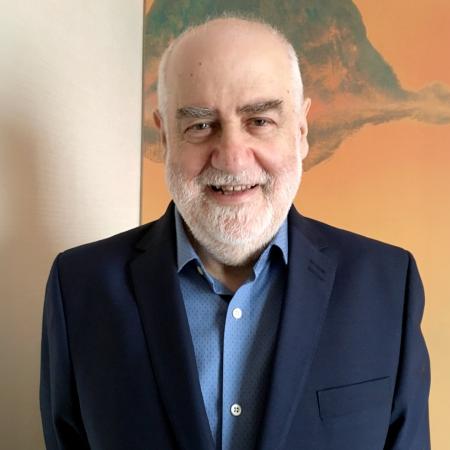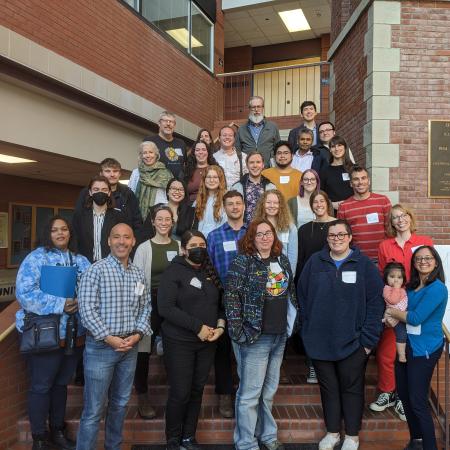The Department of Mathematics at Oregon State University (OSU) recently hosted the seventh annual Cascade Regional Applied Interdisciplinary and Numerical Mathematics (RAIN) Meeting. Due to the COVID-19-related closure of campus, the meeting was held online via Zoom. Thus, this was the first RAIN meeting in the Cloud.
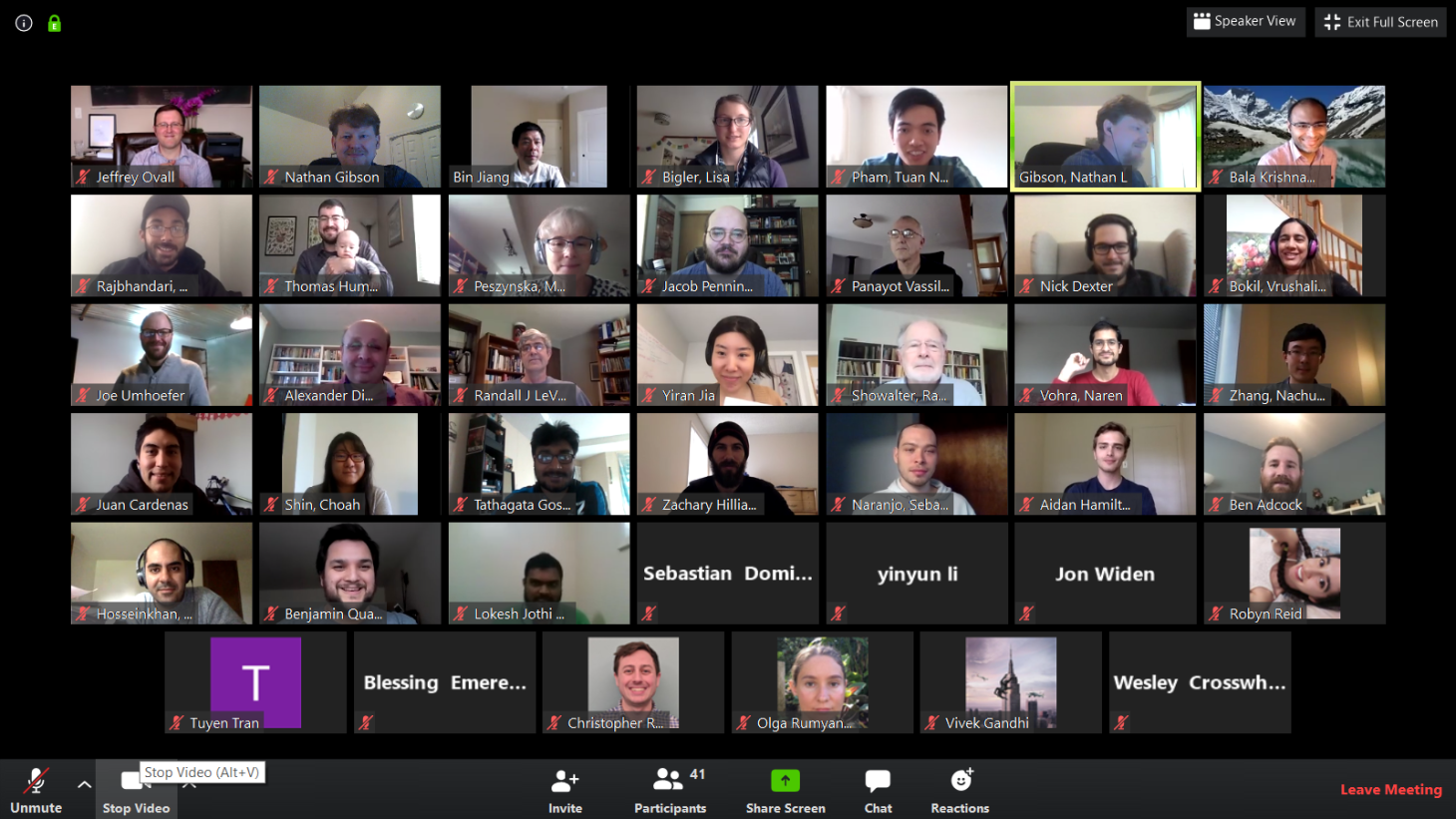
Seventh annual Cascade RAIN Group Photo (screenshot)
The first edition of the Cascade RAIN Meeting was held in Corvallis in 2014, consisting primarily of mathematics faculty from Oregon State and Portland State Universities. It has subsequently grown to be an annual meeting bringing together researchers from across the Pacific Northwest (and occasionally beyond). A list of previous editions of the conference is provided at https://sites.google.com/site/cascaderainmeetings/events-list.
The RAIN meeting is a gathering of researchers for rapid and informal communication of ongoing research activities in computational and applied mathematics in the northwest region. It is intended to complement the annual PNWNAS and biennial SIAM PNW Section meetings, which feature longer lectures by invited speakers. At RAIN, talks from graduate students are encouraged. The meeting format is similar to the Finite Element Circus, in that the speakers, talk time and speaker order are all determined at the opening of the meeting. The talk length is determined by the total available time divided by the number of speakers, with talk duration typically ranging between 10 and 15 minutes. Typically volunteer speakers write their names and talk titles on a slip of paper to be placed in a hat for a random draw that determines the talk order. On Zoom, speakers announced their talk titles via Chat and a Google Sheet was used to randomize the speaker order.
There were nearly 60 participants attending (including two who registered “on site”), with 15 volunteering to speak. Originally there were only 14, but that would have meant an awkward 21 minutes per talk, so Prof. Nigam from Simon Frasier University (SFU) persuaded her student Javier Almonacid to present a very well-done talk at very short notice!
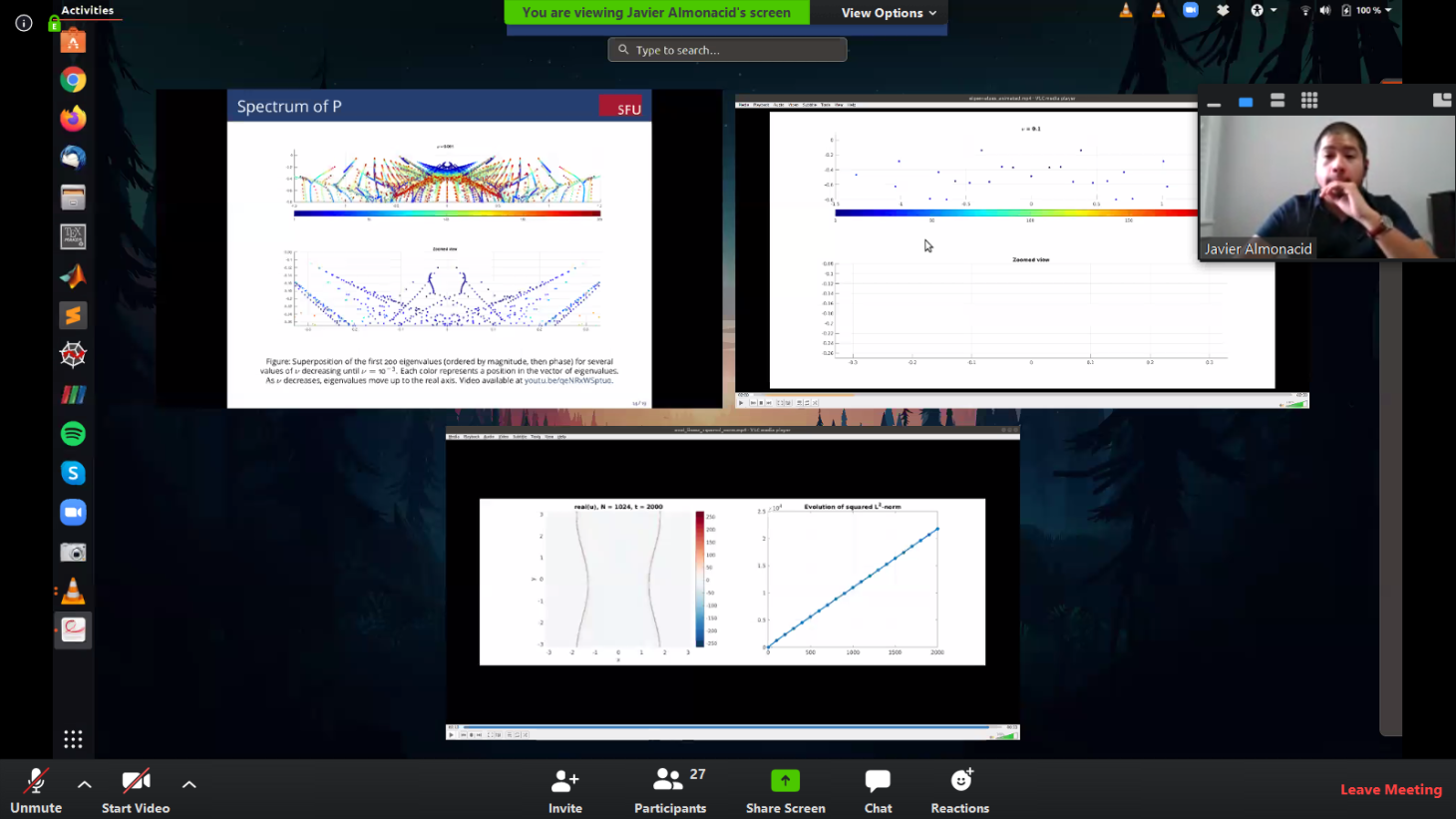
Javier Almonacid, Graduate Student, SFU, “Singular Solutions and the Spectrum of Zeroth-order Pseudo-differential Operator”
As there are no parallel talks at a RAIN meeting, logistics was simple; only one Zoom “room” was used. Coffee breaks were shorter than usual as there were no lines at the restrooms! And while there were hiccups (everyone inexplicably got disconnected from Zoom several minutes into the meeting), the quality of the talks and the value of just having this forum for the dissemination of research, made the inconvenience of the venue negligible.
“I was actually pleasantly surprised to see how effective a virtual meeting could be.” --Ralph E. Showalter, Professor, Oregon State University

Lisa Bigler, Graduate Student, OSU, “Computational Modeling of Phase Transitions Geared Towards Permafrost Modeling”
Talk topics ranged from “3D muscle modelling” to “Statistical Forest Modeling”; from “Iterative Reconstruction of Sparse View and Limited Angle CT Data with Learned Penalty Terms” to “Predicting the Spatial Confinement of Localised Eigenmodes”; and from “Soft Matter Surface Features using Geometric Measure Theory” to “Matrix Factorization and Deep Model Compression”.
“Wow .. very impressive set of topics” --Robert T. Brigantic, Ph.D., Operations Research Scientist,Pacific Northwest National Laboratory
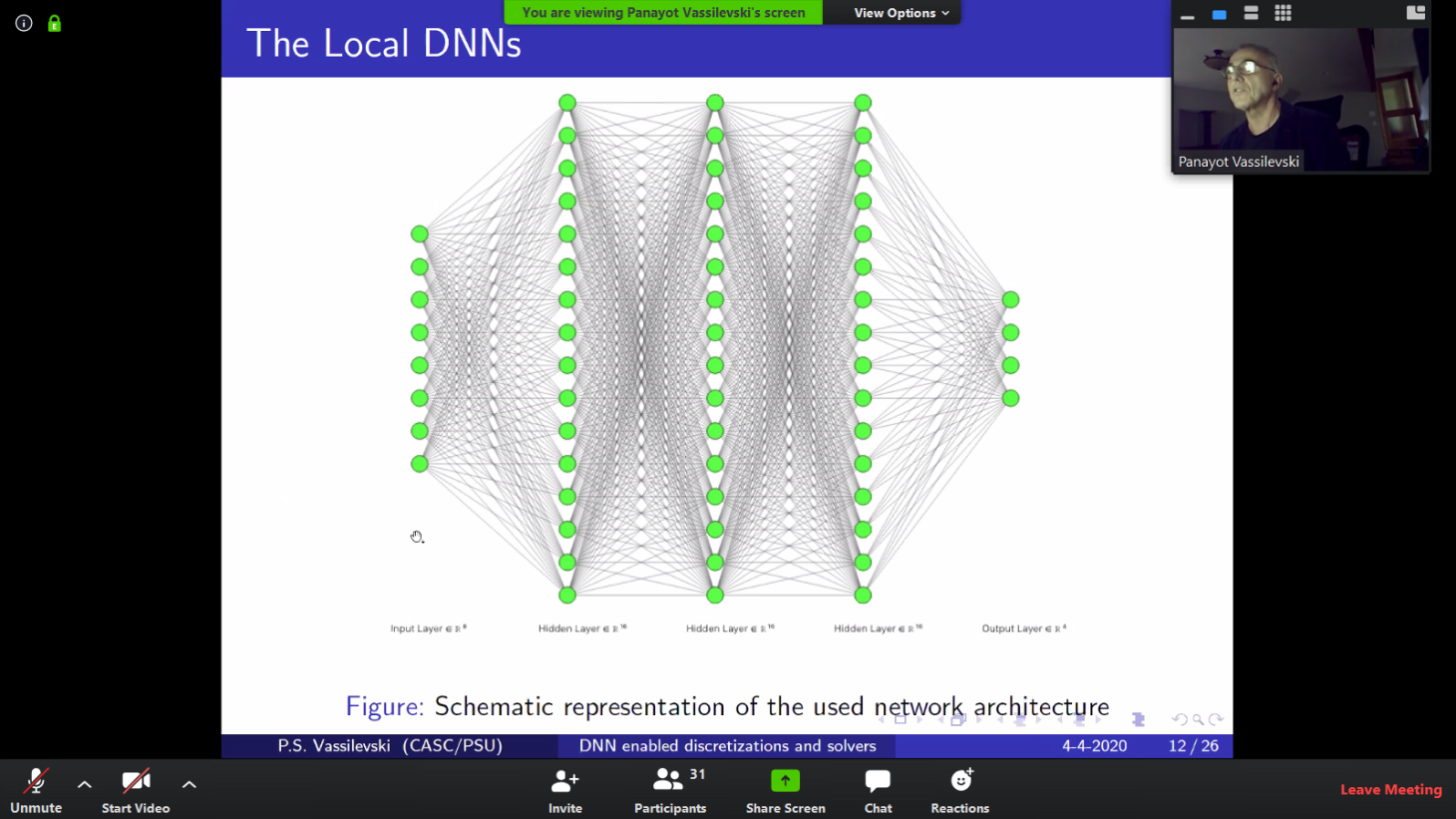
Panayot Vassilevski, Portland State University, “DNN Enabled Discretizations and Solvers”
Some talks were given traditionally, with slides and perhaps videos of simulations, while one was handwritten on a tablet and another was an overview of several papers in a pdf viewer! Some speakers decided to dress for the occasion, donning bow ties and sport jackets. It was an unusual realization of an already atypical meeting. In many ways the virtual format was not ideal, but in others it was convenient. A speaker’s co-author from Maryland was able to effortlessly attend this usually regional meeting. The internet has a way of putting us all the same distance from each other, even if that is not always as close as we would like.
The local organizers for this year’s meeting were: Nathan L. Gibson (chair), Blessing Emerenini, and Tuan Pham. Significant contributions to planning were made by the Steering Committee: Malgorzata Peszynska, Thomas Humphries, Bala Krishnamoorthy, Jay Gopalakrishnan, Jeffrey Ovall, Nilima Nigam, Ralph E. Showalter, and Milagros C. Loreto. Funding support had been pledged from the SIAM PNW Section, the OSU College of Science, and the OSU Mathematics Department.
This article was created by the Newsletter/Media Committee. Please email alumninews@math.oregonstate.edu with any comments.



